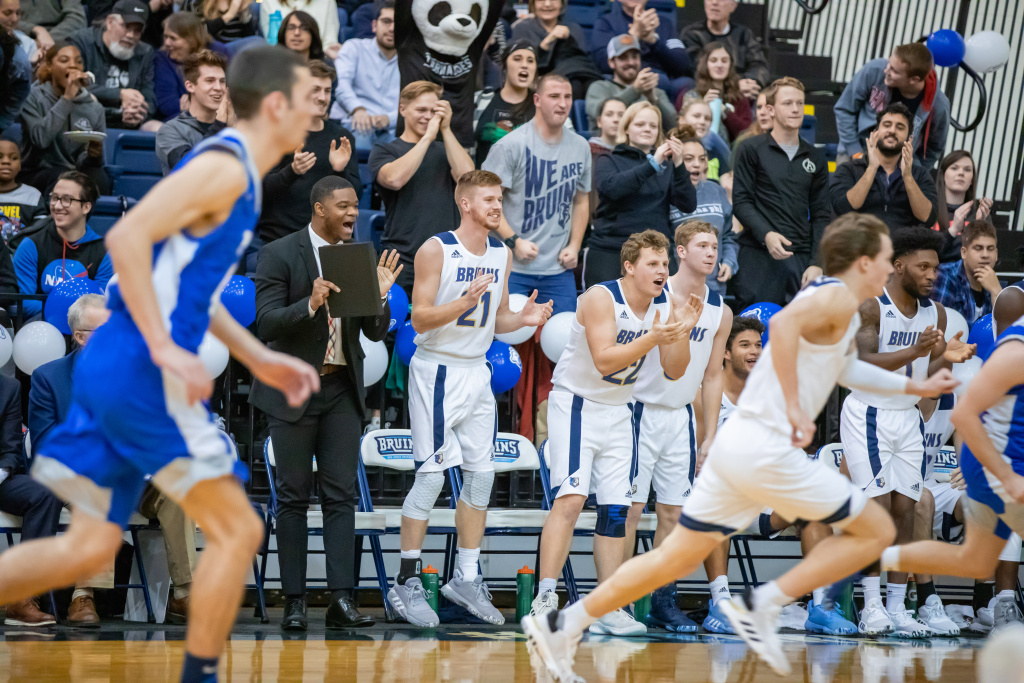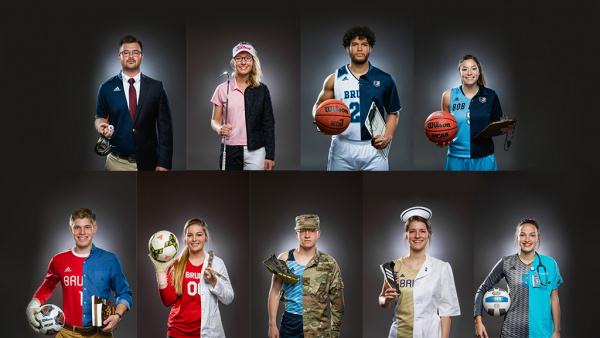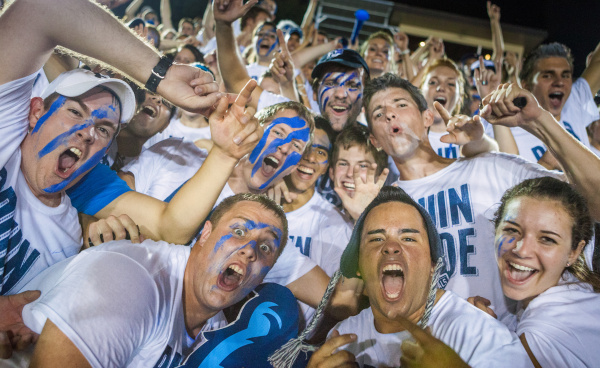Since its foundation in 2012, the Bruins athletics program has taken the excellence of BJU from the classroom to the field. The University’s affiliation with the National Christian College Athletic Association and competition against schools with other athletic affiliations has sharpened the teams’ skills.
To continue growing the programs, the BJU Bruins are in the process of joining Division III of the National Collegiate Athletic Association. Division III, the largest of the NCAA’s three divisions with 438 active schools, does not offer athletic scholarships.
Transitioning
The process of joining the NCAA can take up to five years. As an exploratory school, BJU is currently in the first phase of the process. During this stage, both the NCAA and the institution explore whether the other matches expectations. “At this point, both sides agree that it’s a good opportunity for both, so we are continuing to pursue that,” Director of Athletics Dr. Neal Ring said.
The NCAA requires members to sponsor at least one sport per gender each season, so the next step is the expansion of the spring programs. The first Bruins baseball season will begin January 2021, and creation of the women’s lacrosse team is well on its way. The University hopes to be a Division III provisional school, the prerequisite to active membership, by Sept. 1.
Bruins teams already compete against many Division III schools in the region, including Brevard College, Guilford College, Pfeiffer University and Berry College.
See also: Take Me Out to the BJU Bruins Game
The multi-year process is worth the wait. “(BJU) will be the only Division III team in South Carolina,” men’s basketball coach Burton Uwarow said. “Right now, many DIII-eligible athletes in South Carolina go to either NAIA (National Association of Intercollegiate Athletics) schools, out of state DIII schools, or ride the bench on a DII team.”
Adjusting to the Rules
While details for prospective programs are being settled, the Bruins are prepare for eventual membership. Teams are running a trial season, operating as a Division III school without the oversight of the NCAA. “We’re in the learning mode, trying to be wise with the resources that we are going to have and also positively impact the experiences of our student-athletes,” Ring said.
With the help of Christa Schlichting, assistant volleyball coach and compliance coordinator for all Bruins teams, athletics programs are learning how to adapt to a new manual. “My job is just to educate our coaching staff and to be an advocate for them as far as all of the new rules that we’ll have to adjust to,” Schlichting said.
Teams might already abide by some of the rules, but it’s easy to violate other rules because of how the program was run for the past eight years. Schlichting knows that “our playing and practice season requirements are going to be a huge shift for all of the coaches here and all of the teams.”
“(Basketball) players are not allowed to practice until Oct. 15,” said women’s basketball coach Mike LeViere, because Division III emphasizes the academic experience. “Our athletes, especially the freshmen, will have been in school for weeks and have established routines that are then interrupted in a major way by the basketball season,” he said.
Other challenges include new recruitment guidelines and finding ways to fit the BJU mission and discipleship focus into a shorter Division III schedule. While the Bruins are, in Uwarow’s words, “abiding by rules that much of our competition this year is not abiding by,” the trial season allows the teams to notice these issues and learn to adapt.
Matching Excellence
But why join the NCAA? Being part of a well-known trademark is beneficial. A college’s most attractive recruiting criteria include its accreditation, its nonprofit status and its athletic department’s affiliation.
“When you think about college athletics, there is one universal brand, and that’s the NCAA,” Ring said. BJU student-athletes will compete against a wider pool of schools. “The member institutions of the NCAA have made a commitment to quality in their athletic departments and the game experience at these institutions is well run, from both a participant and fan point of view,” LeViere said.
For BJU, becoming a NCAA member means more than joining a brand. The standards of NCAA Division III match BJU standards. “It’s a holistic approach to the educational process,” Ring said. “It encourages the student-athletes to participate in other things in the University.” Division III gives its members more time off the court—with shorter pre-season training and fewer practices and contests—recognizing them as students first and athletes second.
See also: BJU Bruins Weigh In on National Student-Athlete Values
The combination of the academic standards, professionalism and athletic excellence of Division III schools “aligns very neatly with who we are and what we are trying to do,” Ring said. “We talked to about 50 different schools, (and) we found that moving to Division III was a positive move on the whole for their student-athletes and their student body and their constituents. We hope to say the same thing in three or four years.”








